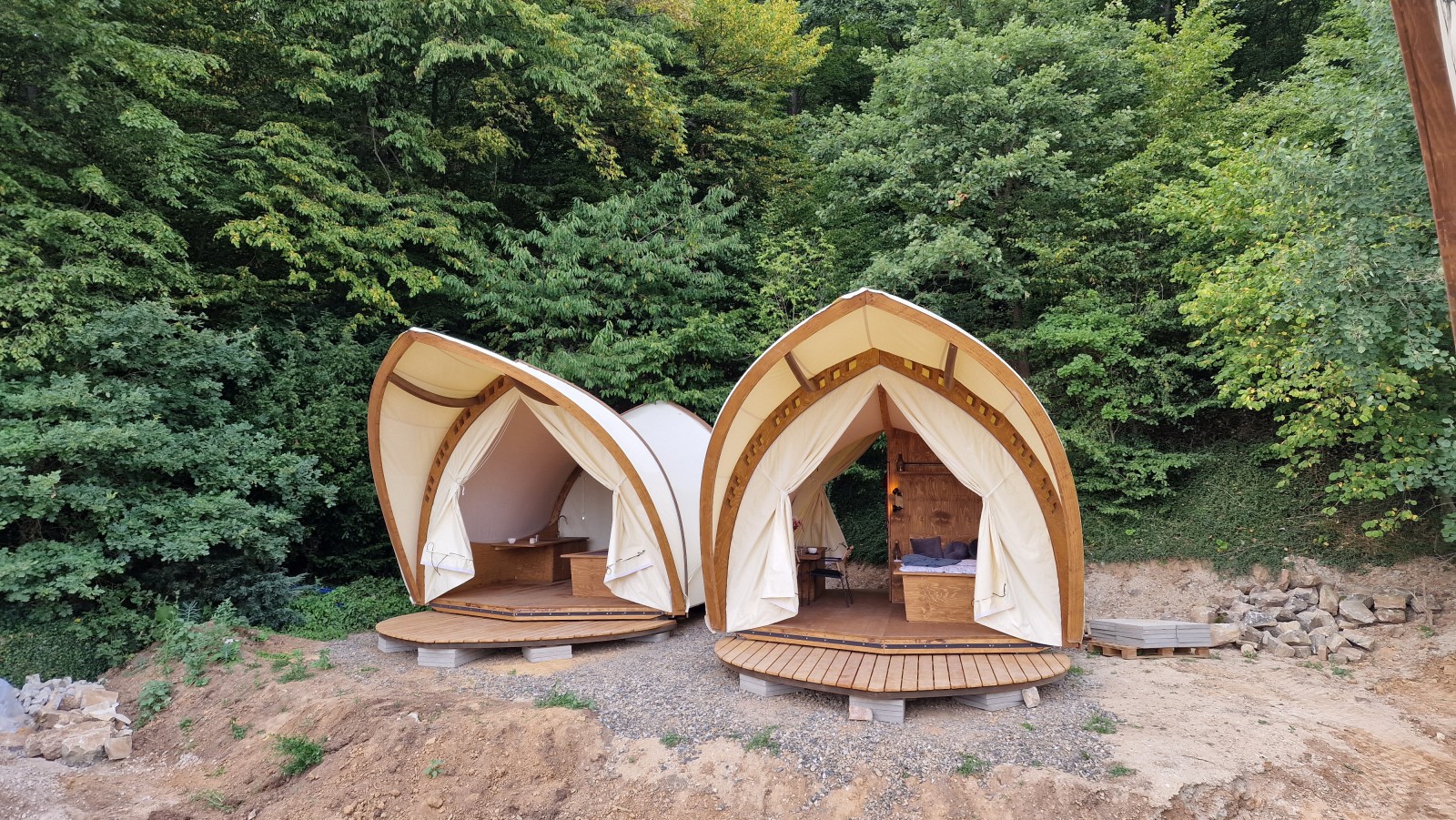In order to keep the ecological footprint as low as possible, natural raw materials should be used. Tent tarpaulins made of natural fibres create a pleasant indoor climate.
Renewable materials such as wood not only look great, they are also durable and stable. They keep an accommodation's carbon footprint low, because wood is extremely sustainable:
It keeps growing and can be sourced without the need for much energy. In addition, when growing, wood binds CO2 from the air. The wood used should come from certified, local forestry.




